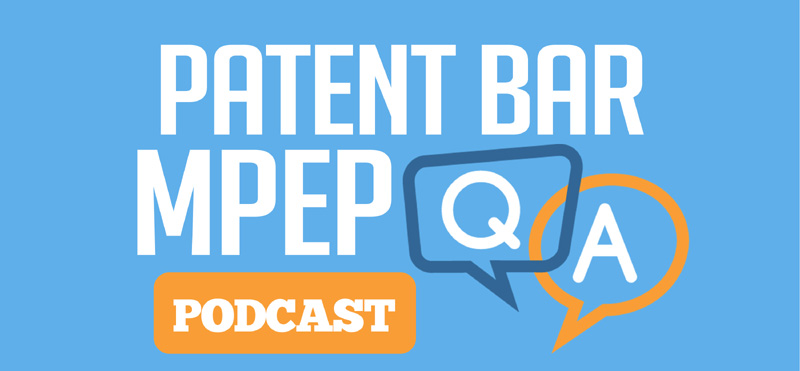
Podcast: Play in new window | Download
Subscribe: Apple Podcasts | RSS
Question:
How can a provisional obviousness rejection be overcome?
Answer:
A provisional obviousness rejection can be overcome by:
- Arguing patentability over the earlier filed application;
- Combining the subject matter of the copending applications into a single application claiming benefit under 35 U.S.C. 120 of the prior applications and abandoning the copending applications
- Filing an affidavit or declaration under 37 CFR 1.132 showing that any unclaimed invention disclosed in the copending application was derived from the inventor of the other application and is thus not invention “by another”;
- Filing an affidavit or declaration under 37 CFR 1.131(a) showing a date of invention prior to the effective U.S. filing date of the copending application.
- For an application that is pending on or after December 10, 2004, a showing that (1) the prior art and the claimed invention were, at the time the invention was made, owned by the same person or subject to an obligation of assignment to the same person, or (2) the subject matter is disqualified under pre-AIA 35 U.S.C. 103(c) (i.e., joint research agreement disqualification).
Chapter Details:
The answer to this question can be found in chapter 700 of the MPEP. This chapter covers Examination of Applications.
The answer is from the 9th Edition, Revision 08.2017. Depending on future changes to the MPEP, the question and answer may or may not be applicable in later Editions or revisions.
Section Summary:
This question and answer comes from section 706.02(k) of the MPEP. The following is a brief summary of this section:
706.02(k) Provisional Rejection (Obviousness) Under 35 U.S.C. 103 Using Provisional Prior Art Under Pre-AIA 35 U.S.C. 102(e)
This section covers a provisional rejections under 35 U.S.C. 103 using provisional prior art under pre-AIA 35 U.S.C. 102(e). There is an overview of the historical background including a discussion of the CREATE Act.
Provisional obviousness rejections are discussed in detail. Where two applications of different inventive entities are copending, not published, and the filing dates differ, a provisional rejection under pre-AIA 35 U.S.C. 103(a) based on provisional prior art under pre-AIA 35 U.S.C. 102(e) should be made in the later filed application unless the application has been excluded under pre-AIA 35 U.S.C. 103(c). Otherwise the confidential status of unpublished application, or any part thereof, must be maintained.
In addition, so long as the applications have at least one inventor in common and the other requirements are met, the Office will permit a claim for 35 U.S.C. 120 benefit without any additional submissions or notifications from applicants regarding inventorship differences.
